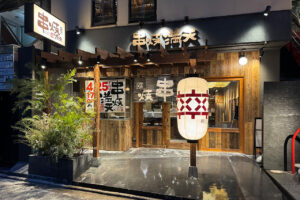
PR
The Minami-za Theater's "Omise-enkyo" (face show) has now become a tradition in the ancient capital during the New Year's holiday season.This face show, which adds a splash of color to a town in the waning days of winter, is a must-see,In fact, it is full of lucky charms.was.
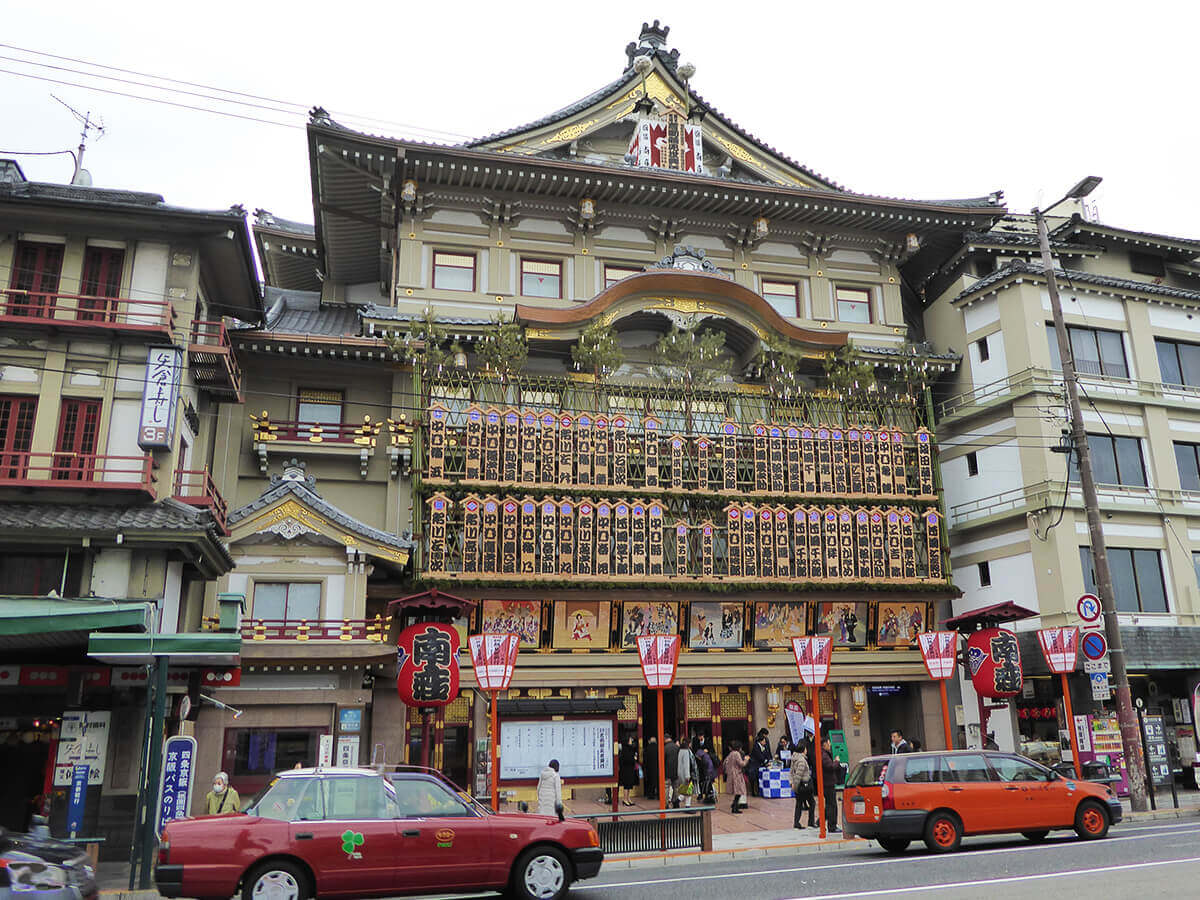
Minamiza from the front
Every year,The reason why the Minami-za Theater holds a Kabuki face show in December comes from the fact that during the Edo period, the Kabuki performance year ran from November of the lunar calendar to October of the following year.The new troupe was unveiled on stage. Because the actors' contracts expired at the end of October, November was the New Year in Kabuki, and the new troupe was presented on stage, saying, "This is the lineup we will use for the rest of the year. This was the "kamimise," or "face show.
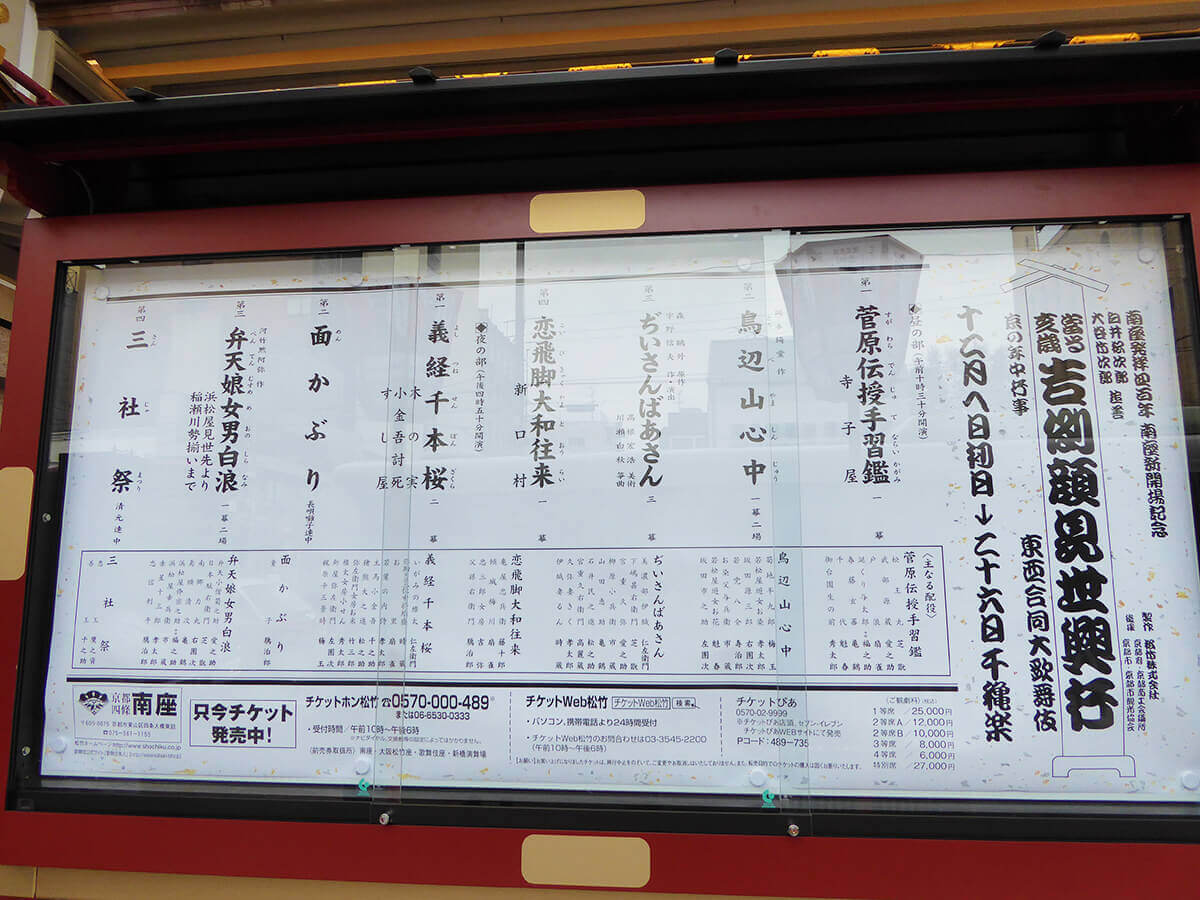
December kabuki performance at Kyoto's Minamiza Theater in which all famous actors perform
The Minami-za Theater in Shijo-Kawaramachi, Kyoto, is the only theater in Japan where this ancient tradition is still practiced today.He said that it is.This year, the Minamiza celebrates its 400th anniversary.The two-year seismic retrofitting project has been completed and the new venue has been opened, so that the festival, which is usually held only in December, will be held for two months from November only this year, making it a very lively event.
this (something or someone close to the speaker (including the speaker), or ideas expressed by the speaker)Maneki" (beckoning signboard) is a representative of the lucky charms that are indispensable for the Omise show.The first is.
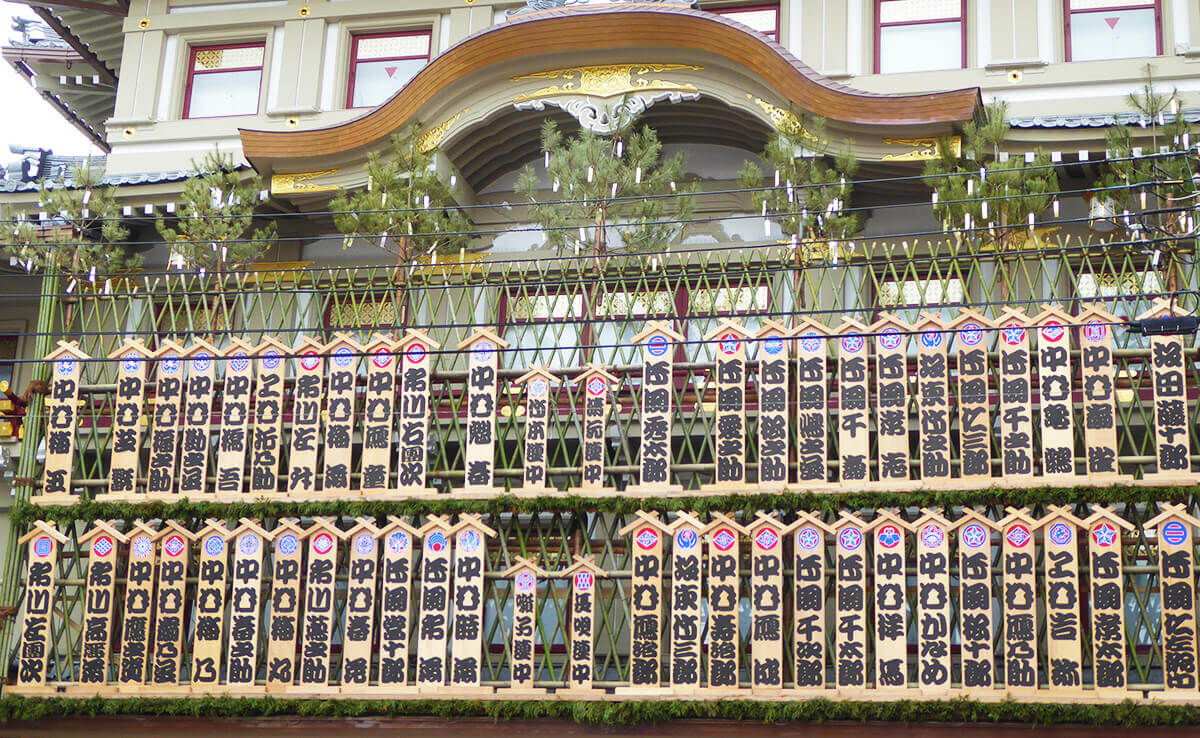
Maneki", a seasonal tradition in the Shijikan season
The names of the actors appearing on the stage are written on a cypress board approximately 3 cm thick, 1.8 m long, and 30.3 cm wide, in the Kantei-ryu theatrical script used since the Edo period,The unique bold, gapless letters are hung to wish for the success of the performance, with the hope that the venue will be filled to capacity without gaps.
For the maneki characters, ink rubbed with rice-brewed sake is used for purification and glazing. Look closely,The upper part of the maneki board is shaped like an "in".The "M" in the name of the restaurant is "M" in the name of the restaurant's owner. This also seems to mean that the theater is hoping for a large number of visitors. It is a spectacular sight to look up at the maneki displayed in a row in front of the Minami-za Theater. I was told that the Kansai group is on the right and the Kanto group on the left.
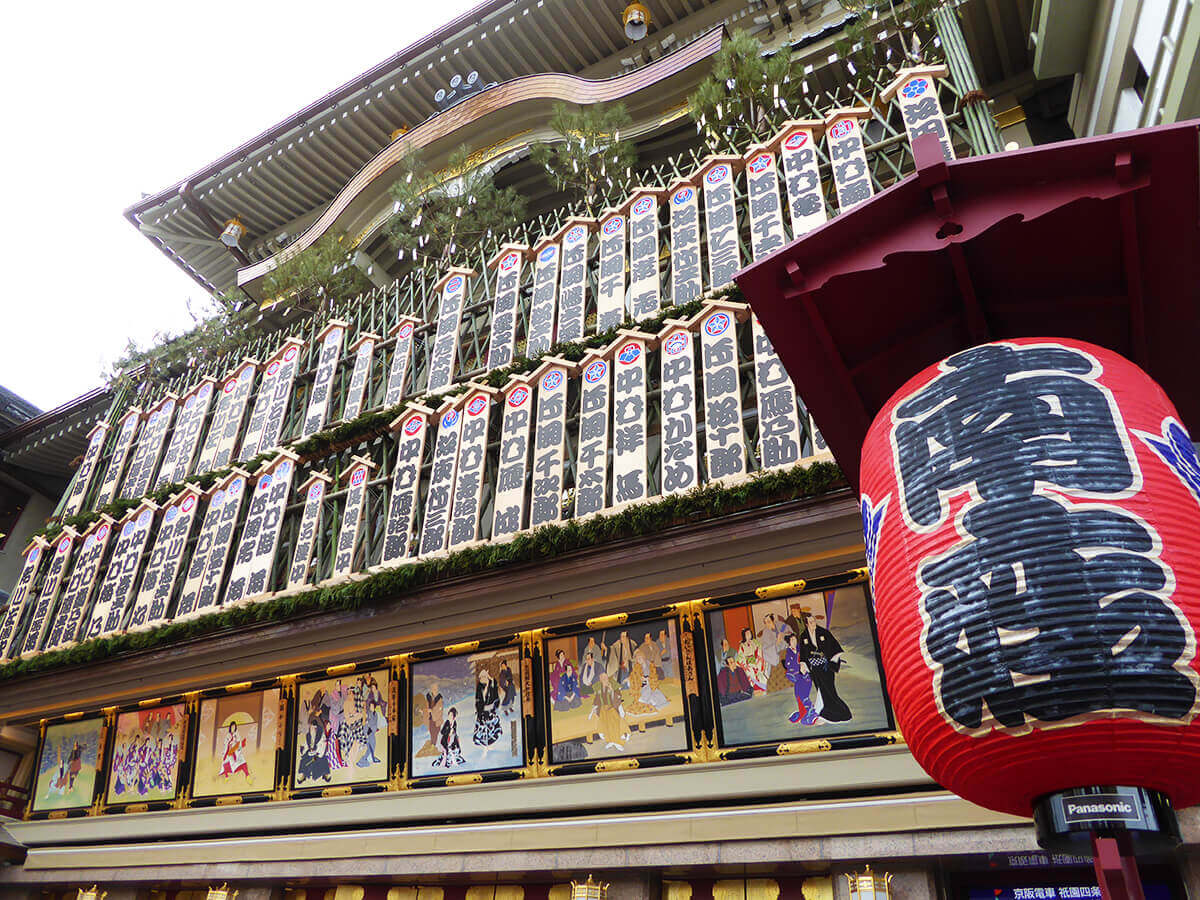
Minamiza and Maneki
Also,On the roof of the MinamizaIt is also a symbol forA turret, which can be said to be a sign of entertainmentis located in front of the building. In front of it,White imperial staff "Brahma" (Brahma)are two stands. This isA "Divine Dependent" to invite God into the theater.The "Brahma" is a symbol of the festival, and it is rebuilt every year for the annual "Omisei" festival. The Bonten always watches over us so that we can perform safely.
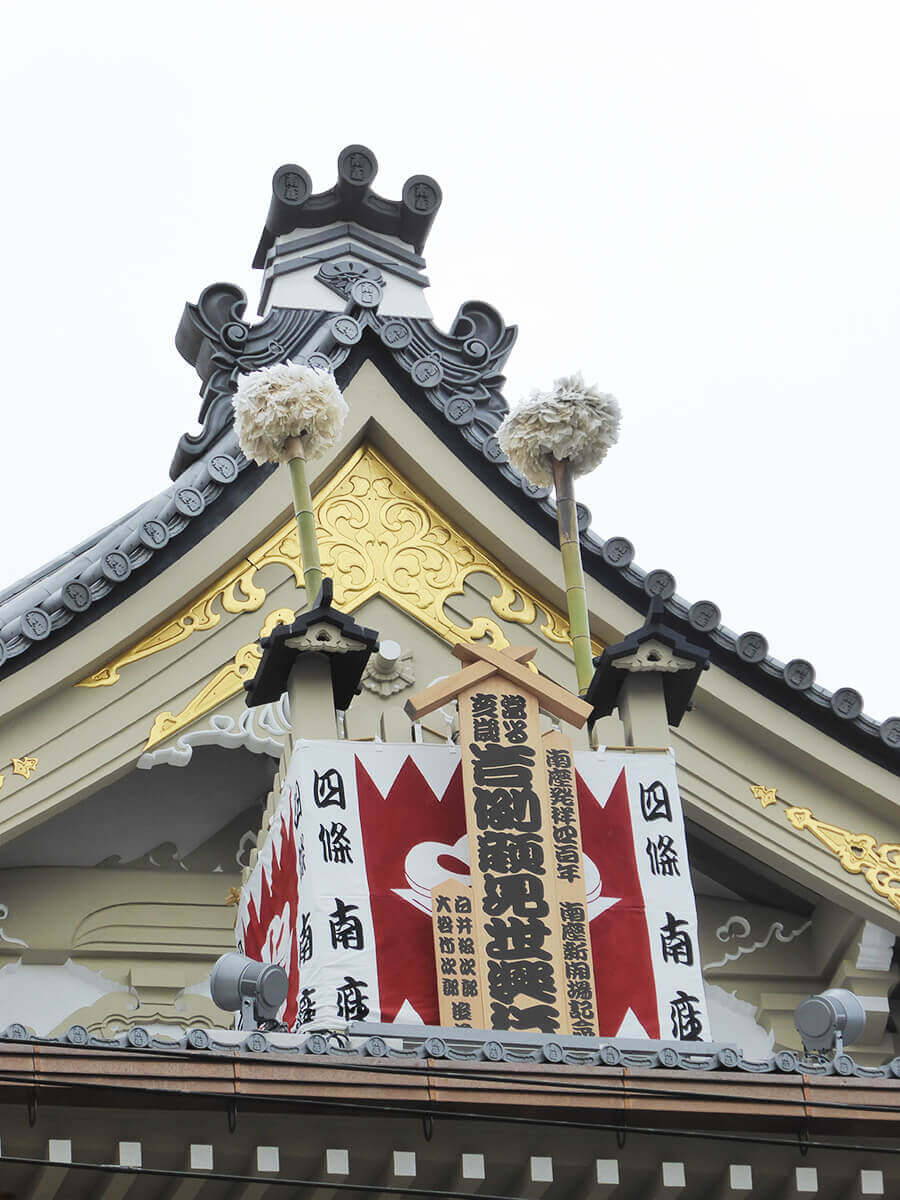
Brahma on the roof
By the way, the hairpins that maiko (apprentice geisha) wear in the Hanamachi district have a different motif each month.The month of December is called "maneki," and a small imitation of a maneki is attached to the ornament of a kanzashi (Japanese hairpin) in honor of the "kaomisei" (a festival of the face).. The small maneki, on which nothing is written, is actually signed by the actor. What a gorgeous and chic arrangement.
It is a busy time of year. While I would like to enjoy an omise-enkyo performance at least once, it looks like another year will end without even having the time to do so. At the very least, I would like to close 2018 by standing in front of the Minamiza Theater and looking up at the "maneki," a performance filled with people's wishes, while thinking about the 400 years of tradition and history of the theater.
Tradition that exists everywhere in the city of Kyoto. It is not just a picture, it is secretly alive in this modern age and continues to coexist with people. The two of Office TO, who previously wrote a series of articles "Kyoto's Demon World Exploration" in the monthly magazine Leaf, explore the mysterious "different" world of Kyoto, which was created over 1200 years. I will unravel the story while actually visiting the place. .
 News
News Feature article
Feature article Featured event
Featured event